Year of the Running Back: How Will Steelers, NFL Attitudes Change After Breakout Season for Rushers?

MOBILE, Ala. and NEW ORLEANS — Don’t draft a running back in the first round of the NFL Draft. Like feeding Gremlins after midnight and walking into Mordor, it has become a thing that one simply does not do.
Then, things changed. Now, only idiots draft running backs in the first round.
However, like all rules, that one will eventually change again. In fact, there are signs we could be watching the start of that change happen right now. At some point, one of those idiots will turn out to be a savant.
But first, let’s start with how we got here. The NFL contract landscape changed significantly due to a change to the league’s collective bargaining agreement in 2011, helping to introduce a new concept to the NFL Draft landscape: positional value.
Before the 2011 CBA, rookies negotiated their own contracts with teams, often causing lengthy hold-outs and incredibly inflated rookie salaries. The new CBA introduced the current draft slot system, where the maximum contract amount for each draft pick has already been established by rule.
The move caused an immediate and dramatic reduction in the amount of rookie contracts. Sam Bradford, the first player taken in the 2010 NFL Draft, signed a six-year, $78 million rookie contract. The following season, Cam Newton signed a four-year, $22 million deal. Fifteen years later, the first overall pick in the 2025 NFL Draft will get $42.4 million over four years, still nowhere near what Bradford got.
The change from market value to predetermined value made for a huge change in draft strategies around the league. The disparity between value and actual cost meant that draft picks went from a way to restock a team for the future to a cheat code to competing immediately. Teams now look for players on rookie contracts as an end-run around the salary cap, allowing a window of significant spending, especially while they have a key player like a quarterback playing under a rookie contract.
The draft slot system is position agnostic, meaning that no matter which player the Pittsburgh Steelers will draft at No. 21 overall this spring, that player will make the same amount of money — a hair over $16 million.
But the open market is not position agnostic. So the amount of the disparity between draft slot and market value is enhanced when teams draft players at the most expensive positions. First-round picks, with a fifth-year option now built into their contract, have the added benefit of extending that disparity over an additional season.
In 2011, the franchise tag amount, or the average of the top five contracts at the position, for quarterbacks was $15.957 million. For running backs, it was $9.684 million. So if Team A drafted a quarterback in the first round of the draft and Team B drafted a running back, and they both panned out to be top-five players in the NFL at their respective positions, Team A would have created an approximately $31.5 million in contract value disparity over their five-year deals.
Most NFL general managers caught onto that very quickly. From 2000-10, there was an average of 3.1 running backs taken in the first round of the NFL Draft, with a maximum of five and a minimum of two. From 2011-24, there was an average of 1.2 running backs taken in the first round, with a maximum of three. Four times, including two of the last three seasons, none were taken.
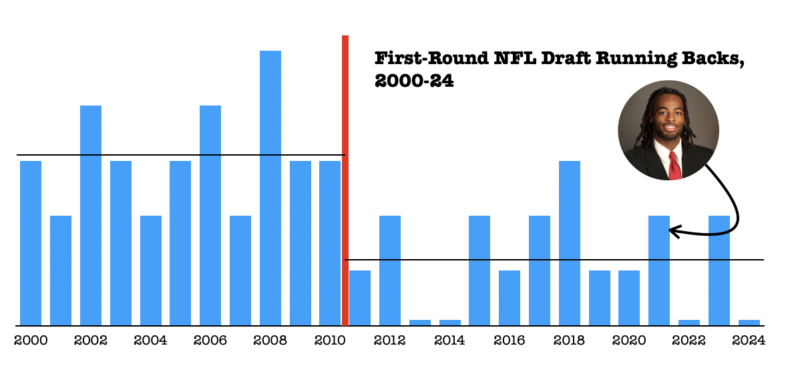
At the same time the new CBA was creating a salary cap rationale against running backs, several teams were successfully experimenting with running back by committee approaches. Instead of one bell cow back getting the vast majority of a team’s carries, teams found that multiple backs could share the workload just as effectively, reducing the impact of injuries on a position that, after the league’s rule changes to protect quarterbacks and wide receivers, was the only one on offense still taking its historic level of physical punishment.
It also kept one player from having all the leverage in contract disputes. Instead of a position like quarterback, where the vast majority of a team’s investment was in one player, running back became more like other positions that spread the wealth around.
When the CBA changed over in 2011, as stated above, the franchise tag, calculated by the average of the top five positions, for quarterbacks was $15.975 million and running backs at $9.684 million, with wide receivers slotting in between at $11.424 million. In 2025, the tag for quarterbacks is $39.636 million, wide receivers $23.598 million and running backs $13.437. The tag amount for quarterbacks has grown by 148% for quarterbacks, 107% for wide receivers and just 39% for running backs.

So the same contract incentive that was introduced in 2011 has grown significantly in the interceding years, turning that $31.5 million advantage from 2011 into a $131 million one now. Given that, a team would have to be crazy to prefer a running back to a more highly valued position in the first round of the draft — especially if they also happened to need a quarterback or a wide receiver.
When the Pittsburgh Steelers used their first-round pick on running back Najee Harris in the 2021 NFL Draft, many said that very thing. Last year, the Steelers largely admitted to the error, declining the fifth-year option on Harris’ contract despite three straight 1,000-yard seasons to begin his NFL career. Since then, he’s added a fourth.
Harris is entering free agency this offseason, and it seems very unlikely that the Steelers will re-sign him, leaving the team once again looking for a replacement in the draft. You can probably bet that Omar Khan won’t make the same choice his predecessor did, and look for a running back in the first round.
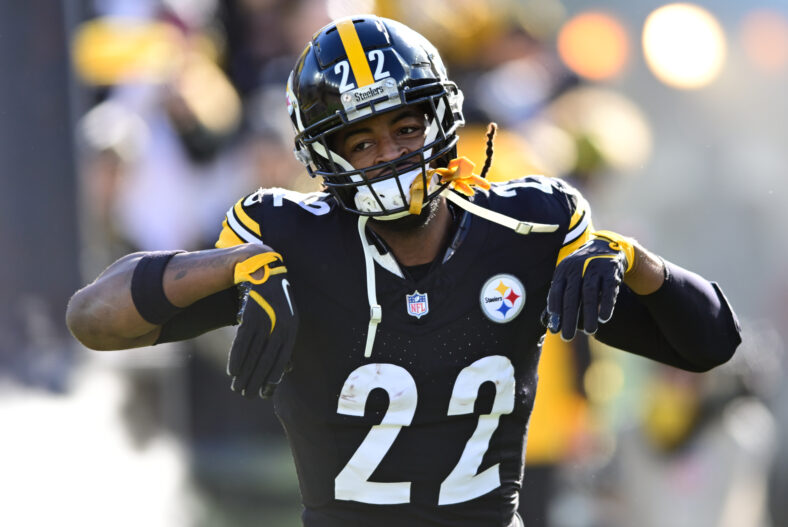
But that math that underlies the reasons running backs don’t make very good first-round draft picks might be shifting.
In the five-year period from 2019-23, free agent contract signings at the running back position reached a nadir. Just two contracts totaling $20 million were handed out, and just one was for than $7.5 million per year.
In 2024, some signs started to show that the 15-year run against running backs might be lifting. After years of a lack of investment in the free agent market, several teams made big splashes in the area in 2024.
The Philadelphia Eagles set things in motion last spring, signing former divisional rival Saquon Barkley to a three-year, $37.5 million contract. The Green Bay Packers signed Josh Jacobs to an even bigger deal, giving him $48 million over four years. D’Andre Swift went to the Chicago Bears on a three-year, $24 million deal. The Baltimore Ravens inked veteran Derrick Henry to a two-year, $16 million contract. Tony Pollard got $21 million over three years from the Dallas Cowboys.
After two $20 million contracts and one $7.5 million AAV in five years, four and five were handed out in one offseason. That certainly raised some eyebrows around the NFL.
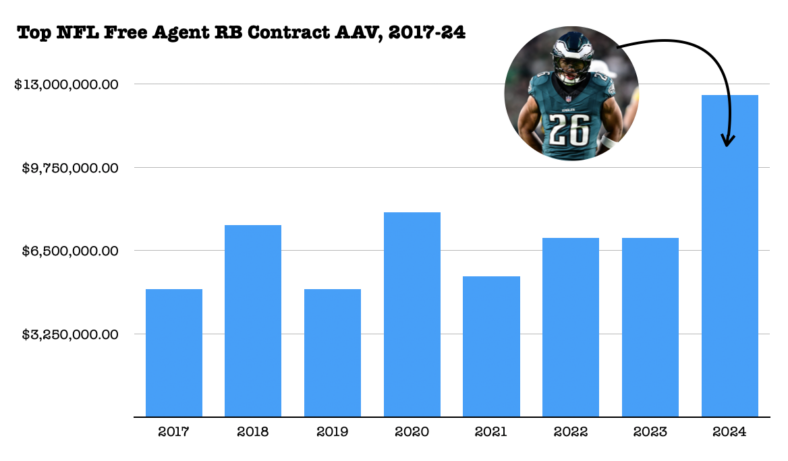
Then Barkley and Henry dominated. After years of teams turning away from high-mileage running backs, two of the best teams in the league bucked the trend. Barkley led the NFL with 2,005 yards and 345 carries. He nearly set the single-season rushing record, sitting out Week 18 while just 100 yards shy. Barkley won the NFL Offensive Player of the Year Award and finished third in MVP voting. Henry followed in second place with 325 yards and 1,921 carries.
Two of the best NFL franchises just bucked the long-term trend at running back and lapped the field as a result. It’s a copycat league, so might others try to follow the same path as the Eagles and Ravens this past season?
Could we see a wholesale reversal of the trend when it comes to investment in the running back position? Several prominent NFL decision-makers seem open to the possibility.
“It might,” Kansas City Chiefs head coach Andy Reid said before Super Bowl LIX in New Orleans. “I hope it does. The thing goes around in a circle. Sometimes it’s a receiver, sometimes it’s tight end, sometimes it’s running backs. [Barkley] sure has done a nice job for them, for sure.”
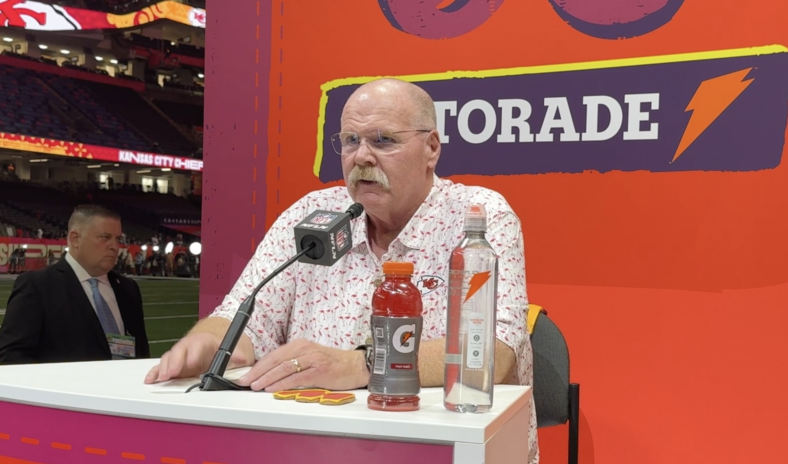
“The trend was going away from it, right? So I don’t know if one year is enough to say OK, we’re pulling a u-turn here,” cautioned Senior Bowl director Jim Nagy.
The Eagles going on to win Super Bow LIX certainly didn’t hurt the idea. Front offices around the league will be entering the 2025 offseason attempting to replicate the success that Philadelphia had in 2024, and Barkley was undoubtedly a huge part of that.
But he wasn’t the only part. And that could be a big factor as to whether this blip becomes a trend. There were five big-money running back contracts handed out last year. Barkley led the Eagles to the Super Bowl. Henry had a dominant season with the Ravens.

Jacobs had a good season with the Packers, but it wasn’t quite as dominant, despite landing the biggest deal. He had 1,329 yards on 301 carries. Pollard did even less in a lost season for the Cowboys, rushing for 1,079 yards on 260 carries. Swift had only 959 yards for the Bears, making his signing look pretty questionable.
The 2025 free agent class does not have the same bumper crop of stars that last year’s did. Harris and Aaron Jones are legitimate starters, though neither is a star on the level of Barkley or Henry. Nick Chubb did not appear to be the same player in 2024 after a devastating knee injury. J.K. Dobbins, Raheem Mostert and Javonte Williams are not on that level.
So there won’t be another big crop of high-priced contracts handed out. But if teams think that the model displayed by the Eagles and Ravens in 2024 is replicable, there might be a bidding war and some big paydays in the future of Harris and Jones.
It’s clear given the results of 2024 that not every team is one big-money running back contract away from having the kind of success that the Eagles and Ravens did. Philadelphia has famously been built from the trenches out by general manager Howie Roseman. They were already a dominant running team before they went out and got Barkley.
In 2023, Swift ran 229 times behind the Eagles’ elite offensive line for 1,049 yards, fifth-best in the NFL, and 5.0 yards per carry. In 2024 with the Bears, he struggled to 3.8 yards per carry and finished 18th in the league in rushing despite 24 more carries.
For teams with an elite offensive line, making a big splash at running back might make sense. But that doesn’t mean it’s for everyone.
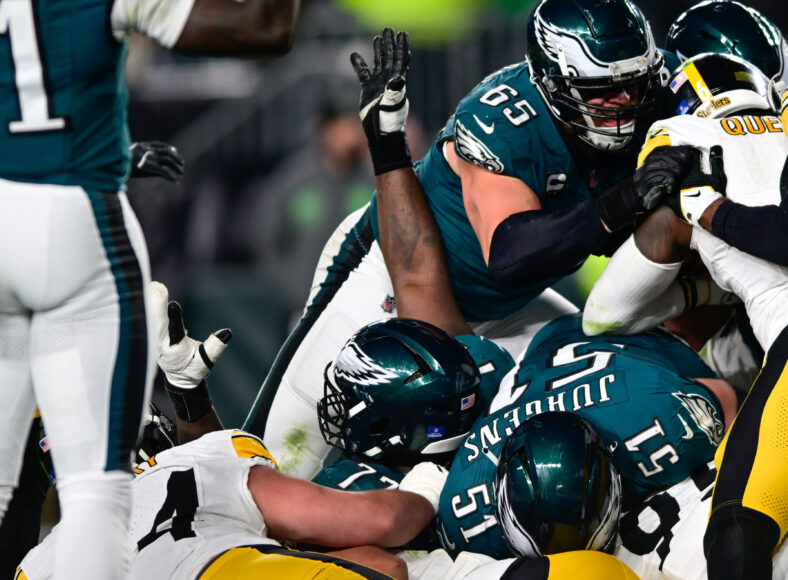
“Howie’s a genius for what he does, and I think he’s always started from the trenches and went out on both sides of the ball,” Eagles running backs coach Jemal Singleton told Steelers Now during the week of the Super Bowl. “I’ve always felt, the better your o-line is, the better your team is. You get get those pieces where you’re investing in the o-line, you’re doing all that stuff, and now you’ve added this amazing piece to that. They both just got better, and it’s a really cool thing. But I think you go from the trenches out. Go in the opposite direction? I don’t know. That’d be a tough sell for me.”
The Eagles seem to understand the reason their investment in Barkley paid off when others did not. But will the rest of the NFL figure that out, or will we see a bunch of teams foolishly hop on the bandwagon without the proper prerequisites? That’s a question many are still trying to figure out.
The powerful Philadelphia line is not the only part of the story, as well. Both the Eagles and Ravens use running quarterbacks as a significant part of their offense. The mobility provided by Lamar Jackson and Jalen Hurts on designed runs adds to what their running backs can do, and the threat of quarterback runs can keep defenses from focusing on Barkley and Henry.
“The combination of the two is a tough thing to stop,” Reid said.
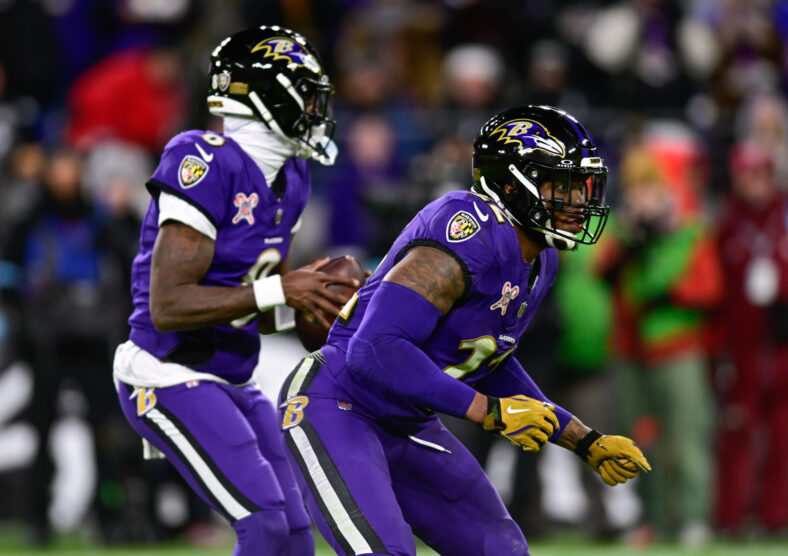
The Steelers learned that the hard way this season. Against the Ravens in the playoffs, they repeatedly sent their edge rushers crashing in on Henry, only for Jackson to pull the ball out and keep it for a big gain. Their focus on Henry didn’t help shut him down, either. He went off for 186 yards.
“You can’t just negate the running back position as a threat with our system, because he can run and then, like anything to play action pass off that and the things that he can do,” Singleton said. “So having a guy like Jalen has been phenomenal, and that’s, again, part of what allows Saquon to truly shine the way he is, because of those around him.”
So should teams be leaping to land one of the top free agent running backs? If they already have a running quarterback and/or an elite offensive line, maybe.
But there’s yet another part to this equation: the 2025 NFL Draft class is the deepest we’ve seen at running back in quite some time. Heisman Trophy runner up Ashton Jeanty from Boise State is a first-round lock, and North Carolina’s Omarion Hampton, Ohio State’s TreVeyon Henderson and Quinshon Judkins and Iowa’s Kaleb Johnson have all been recently been mocked in the first round.
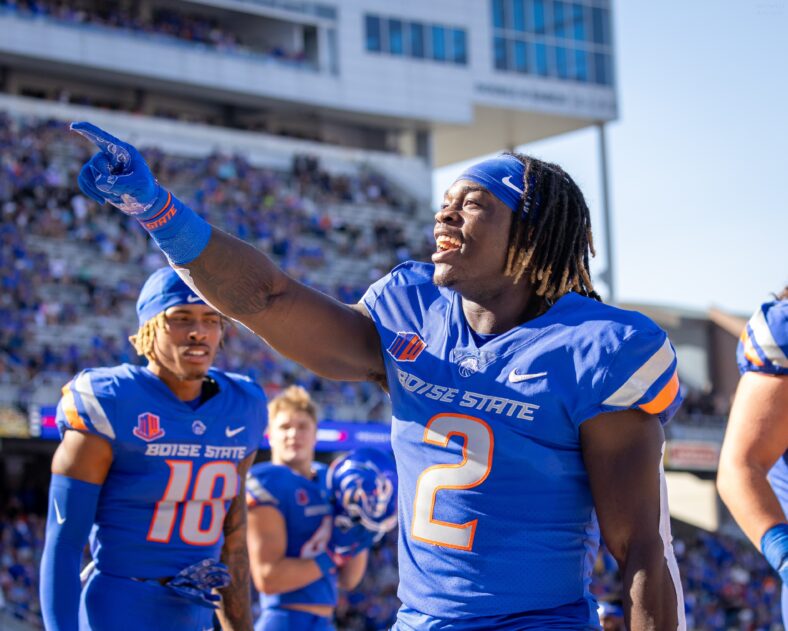
“It’s going to time up well with this running back class,” Nagy said. “So you get a flood of really good young runners in the league at one time, yeah, I think you’re going to see a lot of teams prioritize the position.”
The Pittsburgh Steelers will be right in the middle of it. Khan turned down a chance to have Harris under contract for $6.79 million in 2025. Given recent trends, it seems likely he will sign for more than that going forward. Harris has expressed his frustration at the state of the running back market, and he definitely isn’t going to be shy about the opportunity to cash in.
“If we’re not running, we’re blocking, if we’re not blocking, we’re running a route. We’re always doing something,” Harris said in 2023. “The only time they choose to say it’s devalued, is when it’s time to pay a running back. It’s not devalued at all, they just don’t want to pay running backs.”
Barkley has made no bones about cheering on that next group, and wants the running backs to stick together in light of their own devaluation.
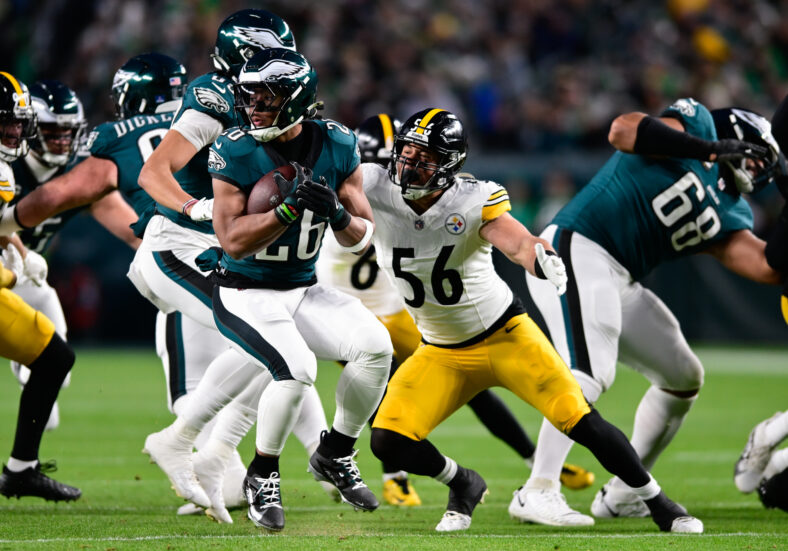
“I feel like where I got, it’s like now, Bijan [Robinson], Jahmyr [Gibbs], Najee, you boys, go beat me,” Barkley said in March. “I’m a competitor, I’m trying to go out this year, especially with the situation I’m in now, I’m trying to be the best running back. No questions about it. But let’s push each other. Let’s all drive it.”
Barkley, for the record, does not expect that full-on shift to occur.
“You’re going to have people that are stuck in their ways,” he said to Steelers Now before the Super Bowl. “That’s how it is. You’ve got 32 teams and every GM and coach and owner are going to view the position differently. But it doesn’t really matter. We have a lot of a talent there. I think that not only me and Derrick, but all the running backs this year showed that if you have an elite guy at the position — if you have an elite guy at any position — they can help your team be successful and help your team play in big games and I think we’re showing that this year.”
At some point this March, Harris is likely going to be at a press conference in another city, earning more than the amount the Steelers turned down to have him in 2025. And while the decision to step aside from Harris was justifiable, you shouldn’t bet against the durable back posting yet another 1,000-yard season next year, if he lands in the right spot.

So the pressure is on the Steelers to find a replacement in the 2025 NFL Draft. Yes, Jaylen Warren will be re-signed, and he will likely absorb at least the big half of Harris’ role going forward, and he is likely a better fit for offensive coordinator Arthur Smith’s running scheme.
But still, the Steelers are going to have egg on their face if they let Harris walk out the door after having the option to have him at a bargain, and then let the best running back class in recent memory go by in the draft without landing one.
The pressure will be on Khan to do the one thing he’s done the best since becoming the team’s general manger in 2022: read the room. Khan has done an excellent job of knowing when to trade up and when to trade back to find the players he wants in the draft, and he’s done a far better job than Kevin Colbert did of maximizing the positional value of the team’s early-round selections.
But there won’t be a lot of precedent to go on this year. There are a lot of running backs in this class, and there does not seem to be a consensus on where they’ll be taken. Jeanty could easily be a top-five pick. He could also fall to the Steelers at No. 21. There could be one, two or more running backs taken in the first round.
Assuming the Steelers pass on Day One, who will be left when their second pick rolls around at No. 52? Can they afford to wait again and hold off until the third round? Does this class have the depth to have quality players make it to the fourth? Even in a normal year, good running backs can be found all over the draft board. Warren was undrafted, and wasn’t even the more highly regarded of the team’s two undrafted backs that offseason. Right now, there are far more questions than answers.
The Steelers have learned the lesson of taking a running back too early. Now they’ll have to read the changing tea leaves to make sure they don’t try to take one too late.

